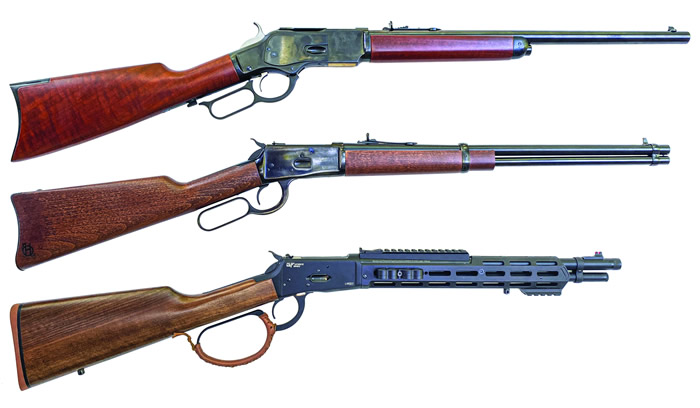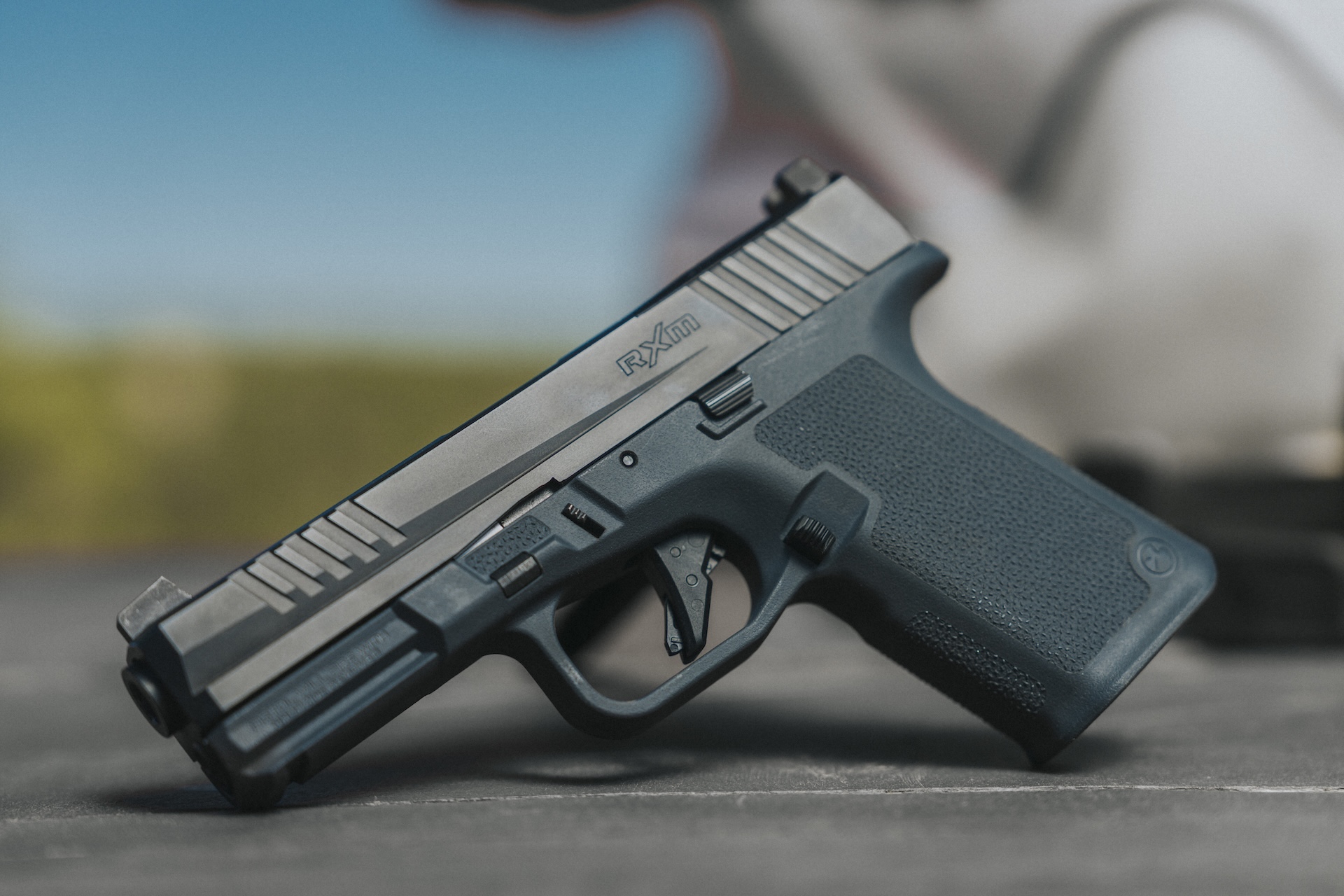With its military background and ‘Cocaine Wars’ reputation, the MAC-10 has quite a history and is still a hoot to shoot – ‘as long as someone else is paying for the ammo.’
Story and Photos by Nick PernaCertain guns conjure up images related to the times they were used. The 1894 Winchester lever-action is the classic cowboy gun of the Old West. Thee M1 Garand is seen as the rifle that won World War II and the M1911A1 as the sidearm of choice for soldiers, sailors, marines and airmen.

Not all weapons have a positive image connected to them, though. The MAC-10 submachinegun is most often associated with bad guys, such as drug dealers. Remember the infamous “chainsaw” scene in Scarface? The weapon used by the Colombian drug dealers is this bullet-spitting bruiser. When most people think of MAC-10s, they envision drug dealers and gang members spraying rival criminals.
Despite those negative images, the weapon actually predates the “Cocaine Wars” of the 1970s and ’80s in Miami. It dates back to 1964, and was designed by Gordon Ingram and Mitchell WerBell’s Military Armament Corporation.
Besides drug dealers, the MAC-10 has been used by Special Operations units in Vietnam, Grenada and elsewhere, along with armies and terrorist groups in other countries. It was also produced in South Africa and saw service in the Rhodesian wars, while variants were made in Brazil and the United Kingdom too.

It’s a simple blowback design. It fires from an open bolt and there is no need to cock it. Basically, you insert the exceptionally long magazine (with the bolt in the rear position), take the weapon off safe, and pull the trigger. That’s where things get interesting.
The MAC-10 has an extremely high rate of fire. It spits out .45 slugs at 1,090 rounds per minute. Its smaller cousin, the MAC-11 in .380, fires at a blistering 1,380 rpm! Be forewarned, if you do get a chance to fire one, be prepared for excessive muzzle rise.
I was surprised at how quickly the barrel climbs when fired on full-auto. Care has to be taken not to unleash a dozen rounds over a berm at a range. Things that aid in controlling full-auto weapons are longer barrels, a sturdy stock that can be locked into the shoulder, and the weight of the weapon itself. A MAC-10 has none of these features.

The only other weapon I’ve shot that was harder to control on full-auto was the Beretta 93R, a full-auto version of the Beretta 92 series. With a little practice, though, I was able to keep the gun on target by firing in short bursts. “Short bursts” with a MAC-10 are around eight to 10 rounds, compared to a rifle such as the Colt M4, where the norm is two to three rounds on full-auto.

I also fired the MAC-10 without the suppressor. The gun is a lot less controllable without it. What makes it more difficult is that there is no foregrip to hold onto, only a nylon strap attached to the front of the receiver. The strap does little to help the operator keep rounds on target. It also puts the shooter’s non-firing hand dangerously close to the small portion of the barrel that protrudes past the end of the receiver.
Thee sights are a simple, fixed-metal affair welded to the receiver. Even when the telescoping stock is extended, the sights are of limited value. Thisis is primarily a “point and shoot” weapon that wouldn’t be particularly useful at extended ranges, say, over 25 meters. This is an up-close-and-personal weapon, once described as “fit only for combat in a telephone booth.”
This weapon predates Picatinny rails and other mounting systems, so add-on optics are pretty much out of the question with a standard MAC-10. Another important note on the suppressor. It gets hot – really hot! It has a thin Nomex sleeve that mitigates some of the heat, but it still gets pretty toasty after a couple of magazines. I wore gloves the majority of the time I tested the weapon. In addition to preventing burns, gloves help keep your hands clean. This weapon spits out carbon and grease from the ejection port like a center fielder chewing on Redman tobacco. Don’t wear your favorite T-shirt to the range on MAC-10 day because it will get ruined.
The 30-round magazines could be used as an impact weapon if the weapon runs dry! They are made of heavy sheet steel. I recommend wearing gloves when loading them. I sliced my thumb open on the lips of the magazine cramming rounds into it.

10 shooters had a go with it. All shots were “aimed” center mass so the high ones around the head were the result of muzzle climb.
As I shot the MAC-10, I tried to envision a practical use for it. Given its high rate of fire, which would quickly deplete a soldier’s basic load, coupled with control ability issues, I don’t see it being a suitable long arm for infantry use.
Where this weapon would excel is as a personal defense weapon, or PDW, used by an operator in a vehicle where extra magazines are readily accessible. A vehicle-mounted executive protection team could use a couple of MACs to lay down a flurry of suppressive fire when trying to break contact from a threat, as long as accounting for the ultimate destination of fired rounds isn’t a major consideration.
Other than that, I’ve got to say it’s a hell of a lot of fun to shoot. I’d do it again, as long as someone else is paying for the ammo …

Here’s the Mac-10 in action with Youtuber Iraqveteran8888









